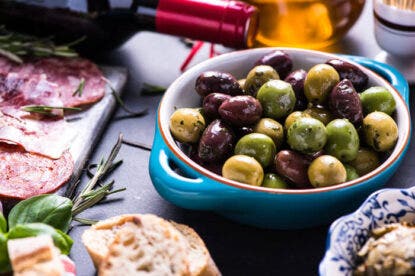Switzerland’s Lavaux Vineyards, near Lake Geneva, recently won designation as a UNESCO World Heritage site. In the French-speaking canton of Vaud, better known as the location of the Montreux Jazz Festival and ski resorts like Les Diablerets than wine to most Americans, the vineyards extend from the storied Castle of Chillon in Montreux to the eastern outskirts of Lausanne on the northern shores of Lake Geneva, offering magnificent views of the Alps.
Located on hillsides so steep that terraces needed to be built and supported by stone walls, and helicopters are sometimes used to harvest grapes, the current Lavaux vineyards date back to the 11th century, planted by Benedictine and Cistercian monks. The Romans were the first to plant grapevines in the Lake Geneva region, however, and the ancient foundations, fortified towers, mills and small medieval towns that remain attest to how wine production here has evolved over the centuries. UNESCO recognized an “outstanding example of a centuries-old interaction between people and their environment developed to optimize local resources” to produce a wine that’s highly valued and a long-time staple of the local economy here. Footpaths linking one village with another, and signboards explaining the wines, growing conditions and traditions make it easy to explore the newest World Heritage-designated wine region, joining others like France’s St. Emilion region and Austria’s Wachau valley.
Switzerland drinks most of the wine it produces, leaving little left to export. The wine exported is mostly to the rest of Europe, rarely to`North America. While 50 varietals are grown in Switzerland, some found nowhere else, the predominant grape in the Lavaux region is Chasselas, which produces a crisp, fruity white wine, light gold in color. The red Lavaux varietals are mainly Pinot Noir, Gamay and Salvagnin. Lavaux, whose principal appellations are Dezaley, Epesses, Calamin and St-Saphorin, is the best-known of five vineyard regions in Vaud, Switzerland’s second-biggest winemaking canton, after the French- and German-speaking Valais. Its distinct growing conditions are due to the so-called “three suns”: the sun shining on Lake Geneva, sunlight reflected by the lake, which moderates the climate, and sunlight retained by the stone walls, which warms the vines at night.
One of the most renowned Lavaux wineries is Domaine Louis Bovard, a family winery in the tiny town of Cully that has made wine since the 17th century. Bovard wines are served at many of Switzerland’s finest hotels, as well as three-Michelin-star restaurants in the Lake Geneva region like Restaurant Philippe Rochat in Crissier and Le Pont de Brent in Brent. (The Lake Geneva region has the country’s highest concentration of Michelin-starred eateries.) They have been founf on the wine lists of many top New York restaurants as well, from Gramercy Tavern, Jean Georges to Restaurant Daniel.
Switzerland Tourism recently launched an international campaign on the theme of “Gastronomy and Wine,” and brochures featuring food specialties, wines, activities, hotels and restaurants of the Lake Geneva region and others have been produced by the tourist office.
For further information, go to www.lake-geneva-region.ch/unesco, www.myswitzerland.com and www.swisswine.ch.
Published: October 10, 2008














